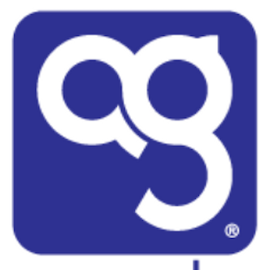Looking for the best Digital Asset Management software? Our comprehensive buyers guide compares the top DAM solutions, features, and pricing to help you make an informed decision. Find the perfect DAM software for your business needs today.
Digital Asset Management (DAM) software is quickly becoming a must-have tool for businesses of all sizes. These powerful platforms can help organizations manage and distribute their valuable digital assets more efficiently, resulting in increased productivity, cost-savings and a better overall customer experience. However, with so many DAM tools on the market, it can be challenging to choose the best one for your specific needs.
That's where this guide comes in. In the following paragraphs, we'll explore the features, benefits and considerations you should keep in mind when selecting a DAM solution. Whether you're a large enterprise or a budding start-up, our guide will help you make an informed decision based on your business objectives and unique requirements.
What is DAM software?
A digital asset management solution helps organizations manage their digital assets across the enterprise. In essence, it is a system for storing, organizing, managing, and retrieving digital assets such as photos, videos, audio files, documents and other creative files. This software provides significant benefits to businesses: it enables them to streamline workflows, avoid content creation and storage duplication, increase collaboration and create an efficient system for managing their digital assets. This solution may be available as standalone software or as a module of a larger system, such as an Enterprise Resource Planning (ERP) or a Customer Relationship Management (CRM) system. Here are some of the common use cases of Digital Asset Management solutions:
Brand asset management: Organizations use DAM software to store and manage their brand assets such as logos, images and graphics. This ensures that their brand is always consistent, no matter who is producing the content.
Product asset management: DAM solutions also help with organizing and managing product-related content such as product images, audio files, videos and specifications. This helps businesses to quickly find the right content for their marketing, sales, and support channels.
Workflow automation: DAM software can automate workflows and processes such as content review, approval, and publishing. This ensures that the right content is delivered to the right audience at the right time.
Rights management: DAM software helps to manage usage rights for digital assets. This ensures that businesses do not run into legal issues related to copyright and licenses.
Collaboration: DAM software enables multiple departments within an organization to collaborate and share digital assets effectively. It helps to create a common repository for all the digital assets within an enterprise.
Digital asset management software is used by a wide range of businesses, including:
Marketing and advertising agencies
eCommerce platforms
Media and entertainment companies
Retail businesses
Government agencies
Non-profit organizations
In conclusion, Digital Asset Management software is a powerful tool that helps businesses manage their digital assets effectively. It streamlines workflows, ensures consistency, and increases collaboration across the enterprise. Organizations that use DAM software are more efficient and productive, which ultimately leads to higher revenue and customer satisfaction.
What are the benefits of DAM software?
Welcome to the world of digital asset management platforms, where businesses can take full control of their digital files and streamline their operations. In today's fast-paced and digital world, it has become essential for businesses to manage their assets efficiently to stay ahead of the competition. A DAM solution helps businesses do just that by providing a centralized location for storing, organizing, and sharing their digital assets, such as documents, images, videos and artwork. Here is a list of the main benefits of implementing a DAM software solution in your business:
Efficient asset organization: Digital asset management tools allow businesses to create a centralized location for their digital assets, resulting in easy organization, retrieval, and distribution of assets across various teams and departments in a business.
Time and cost savings: Efficient digital asset management can save businesses a considerable amount of time and money. A DAM software solution streamlines workflows, reduces duplicate efforts, and provides accurate and up-to-date data, resulting in cost savings from reduced overheads, faster time-to-market, and better cost control.
Improved collaboration: A DAM software solution fosters better collaboration across teams and departments by enabling easy sharing and collaboration of digital assets. Marketing teams can work together seamlessly, avoid duplication of efforts and errors, and stay up-to-date on asset changes through version control.
Enhanced brand consistency: Consistency in brand messaging and identity is crucial for businesses, and DAM solutions provide a centralized location for storing and sharing brand guidelines, logos, and other critical elements, resulting in better brand consistency and messaging.
Improved security and access control: A DAM solution offers comprehensive security features and access control, ensuring businesses can control who has access to their digital assets, and ensuring the security of their sensitive data.
In conclusion, adopting a DAM Software solution can provide businesses with an efficient and streamlined process for managing their digital assets while improving collaboration, reducing costs, enhancing brand consistency, and ensuring the security of their digital assets. In today's digital world, implementing a DAM Software solution is essential for any business looking to stay ahead of the curve.
10 key features of DAM software
Digital Asset Management (DAM) software has become an integral part of businesses' digital media operations. With the increasing volume of digital assets, it's becoming more challenging for businesses to manage and organize their media files. The following ten common features of DAM software provide solutions for managing and organizing digital assets effectively:
1. Asset storage
DAM software solution offers secure storage of digital assets in a centralized location.
2. Metadata management
Metadata is an essential component that enables item identification, searchability, and filtering. DAM solutions offer metadata management features that allow users to add, edit, and view metadata.
3. Asset categorization
Categorizing items is vital in creating an organized library and ease of retrieval. DAM software enables users to segment and classify assets into categories and subcategories.
4. Search and retrieval
DAM software allows users to search and retrieve assets using keywords, metadata, or any other relevant identifier. This makes it easy for users to access assets quickly.
5. Sharing and collaboration
Many companies have staff who work remotely or in different locations, and sharing assets can be challenging. DAM software enables easy sharing of assets and collaboration with colleagues, partners, or clients.
6. Brand management
Brand consistency is key to business success, and DAM software helps manage brand guidelines by providing templates, color palettes, and font systems to maintain brand consistency.
7. Version control and tracking
DAM software provides version control and tracking options which are crucial when managing multiple versions of files. This prevents errors and confusion and ensures that the correct version is used.
8. Integration and API
DAM software can integrate with other applications like content management systems, social media, and marketing automation software, making it easier to automate processes and streamline workflows.
9. User permission management
Having complete control over user access to digital assets is important in ensuring security and compliance. DAM solutions provide complete user permission management where users have access only to the items they need.
10. Reporting and analytics
DAM software enables users to generate reports and analytics to track item usage, usage trends, and user behavior. This provides insights into the effectiveness of the digital asset management system.
In summary, Digital Asset Management (DAM) software offers various features that help businesses manage, organize, and share their digital assets effortlessly. With these features, businesses can ensure brand consistency, streamline workflows, and increase efficiency in their digital media operations.
What to consider before adopting a DAM solution
Digital Asset Management (DAM) software can be an incredibly valuable asset for businesses looking to store and organize their digital content efficiently. These platforms allow companies to manage their multimedia files such as videos, images, and documents in one centralized location and make the content easily accessible for employees across departments. There are several essential factors that companies need to consider when purchasing DAM software. Firstly, the software's compatibility with other systems, such as CMS or CRM, is crucial. Many organizations use multiple systems to manage different aspects of their business, and it's important that the DAM software seamlessly integrates with these other platforms. This integration ensures that the digital assets are easily accessible, reducing the time and effort necessary to search and retrieve the right files. Another factor to consider is the scalability of the DAM software. As a company grows, its content repository will also increase in size and breadth. Therefore, the chosen DAM software must have the ability to scale along with the business's needs. It's important to ensure that the software can handle a large number of users, that it maintains speedy performance, and that it can store and manage large amounts of data without compromising accessibility or functionality. The level of customization and flexibility offered by the DAM software should also be taken into account. Every company's digital asset management requirements are unique, and this software should be able to adapt to meet the specific needs of the organization. Look for software that offers a high degree of customization and integration with third-party applications and intranet portals. DAM software's security features are also a crucial consideration. With the increasing frequency of data breaches, it's essential to choose software that can ensure the safe and secure storage of sensitive digital content. Factors such as user access controls, permissions, audit trails, and encryption are some of the key features that enterprises should look for when making their choice. Lastly, the software's ease of use should also be assessed. The software's UI and UX should be intuitive and user-friendly to minimize user training overheads, increase adoption rates, and avoid frustration. This aspect directly equates to increased productivity and user satisfaction. In conclusion, choosing the right DAM software is a critical decision for businesses. It is important to consider factors such as compatibility, scalability, flexibility, security, and ease of use to ensure the software can grow as the company grows. Additionally, make sure that the software meets the unique requirements of the company and that it can integrate with other third-party systems and applications.
The biggest trends in DAM software
Looking into the future, Digital Asset Management (DAM) software trends will shape how businesses organize, store and manage their digital content repositories. The top trend in DAM software is Artificial Intelligence (AI) integration. AI-powered DAM solutions will aid in automating mundane processes such as content tagging, organization, and curation, whilst reducing time and effort duplication, and aiding in faster content retrieval. Another trend that will shape DAM software is the integration of blockchain technology, which will provide authentication, traceability, accountability, and security features for digital assets. This technology will offer a secure and tamper-proof method of preventing counterfeit assets, efficiently handling payments, and monitoring usage rights. The ability of DAM software to integrate with other collaboration, project management, and creative tools will also be a significant trend. A centralized cloud-based DAM platform interconnecting different specialized tools will offer a collaborative platform for creative teams, vendors and clients, boosting efficiency, enhancing team creativity, and preventing time and effort duplicates. Lastly, DAM software trend is geared towards integrations with social media platforms. Social media DAM solutions will make it easier for social media managers to search, manage, and organize digital assets that were specifically created for social media campaigns. This trend will help you maximize the use of your digital assets across social media platforms.





